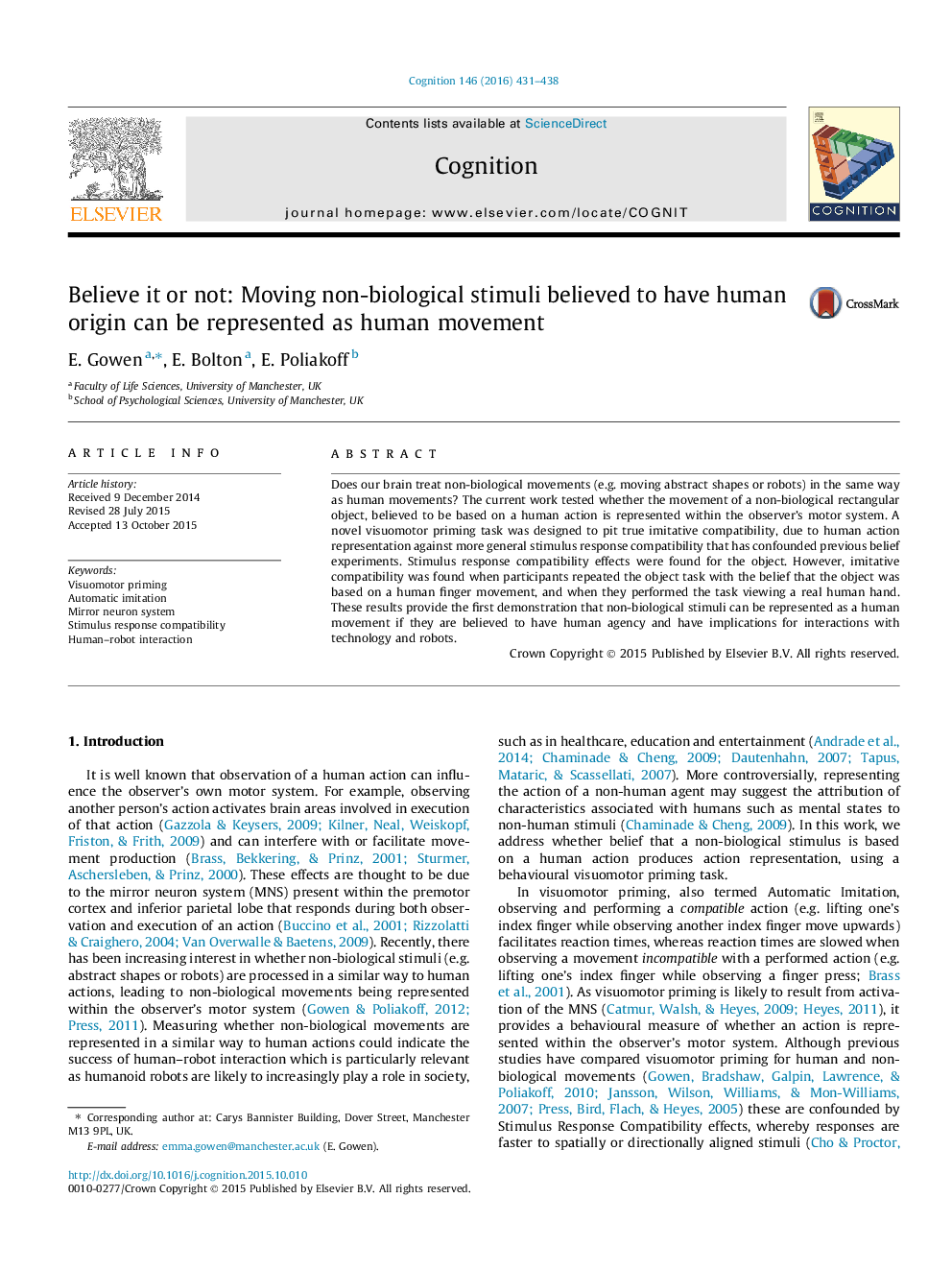| Article ID | Journal | Published Year | Pages | File Type |
|---|---|---|---|---|
| 7286476 | Cognition | 2016 | 8 Pages |
Abstract
Does our brain treat non-biological movements (e.g. moving abstract shapes or robots) in the same way as human movements? The current work tested whether the movement of a non-biological rectangular object, believed to be based on a human action is represented within the observer's motor system. A novel visuomotor priming task was designed to pit true imitative compatibility, due to human action representation against more general stimulus response compatibility that has confounded previous belief experiments. Stimulus response compatibility effects were found for the object. However, imitative compatibility was found when participants repeated the object task with the belief that the object was based on a human finger movement, and when they performed the task viewing a real human hand. These results provide the first demonstration that non-biological stimuli can be represented as a human movement if they are believed to have human agency and have implications for interactions with technology and robots.
Related Topics
Life Sciences
Neuroscience
Cognitive Neuroscience
Authors
E. Gowen, E. Bolton, E. Poliakoff,
